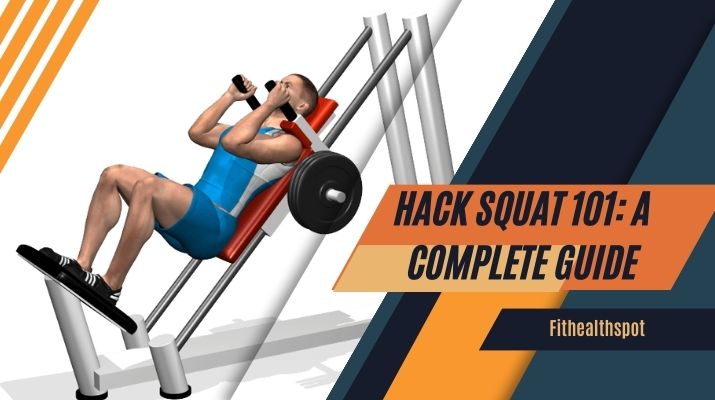Introduction
Welcome to your ultimate guide on hack squats! Whether you’re a fitness enthusiast looking for the next challenge or a beginner striving for more effective leg workouts, hack squats are a fascinating topic for all. This exercise is a hidden gem that doesn’t always get the limelight but plays a crucial role in building lower body strength and muscle definition.
But what exactly is a hack squat, and why should you consider incorporating it into your fitness routine? This comprehensive blog post will delve into the nitty-gritty of hack squats, unraveling its variations, techniques, and benefits. We’ll also compare it with other popular leg exercises like traditional squats and leg presses, so you can make an informed decision for your workouts.
So, gear up as we take you through the ultimate hack squat journey — from its basic mechanics to pro tips and common mistakes to avoid. Let’s get started!
What is a Hack Squat?

The hack squat, named after Russian strongman and wrestler George Hackenschmidt, is a compound exercise that focuses primarily on the quadriceps but also engages the glutes, hamstrings, and calves. Unlike traditional squats that require you to position a barbell on your upper back, hack squats often employ the use of a hack squat machine where you’re leaning back against a padded surface. This positioning allows for a different angle of muscle engagement, focusing on lower-body strength and hypertrophy.
Origins of Hack Squats
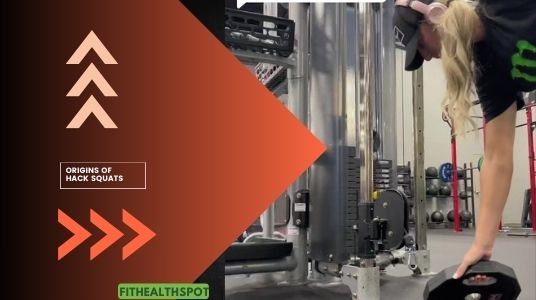
The hack squat has its roots in the early 20th century and is named after George Hackenschmidt, who was a pioneering figure in professional wrestling and strongman competitions. While traditional squat techniques were already known, Hackenschmidt’s unique variation added a new layer to leg training, which became popular over time as a way to target specific muscle groups differently.
Mechanics
The mechanics of a hack squat differ slightly from a traditional squat. In a hack squat, your back is supported, and your legs are positioned in a way that places less stress on the lower back. This allows for greater isolation of the quadriceps, making it a go-to exercise for those looking to build muscle mass and strength in the front of the legs.
How to Perform Hack Squats: A Step-By-Step Guide
Performing a hack squat with proper technique is crucial for maximizing its benefits while minimizing the risk of injury. Here’s how you can do it:
Step 1: Set Up the Machine
Adjust the machine’s backrest and shoulder pads according to your height Position your feet on the footplate, spaced shoulder-width apart.
Step 2: Get into Position
Lean back against the padded surface, making sure your shoulders are under the shoulder pads. Grip the handles at your sides.
Step 3: Initial Lift
Disengage the safety bars and straighten your legs to lift the weight, but don’t lock your knees.
Step 4: Lowering Phase
Inhale as you slowly lower your body by bending your knees. Make sure your knees don’t go past your toes.
Step 5: The Ascent
Exhale and push through your heels to return to the starting position, again avoiding locking your knees.
Step 6: Complete the Reps
Perform the desired number of repetitions, then engage the safety bars when you’re done.
Pro Tips:
- Maintain contact between your back and the pad throughout the duration of the exercise.
- Focus on a smooth, controlled motion to engage the muscles effectively.
- Don’t rush through the reps; quality is more important than quantity.
Hack Squat vs Traditional Squat

One of the most commonly asked questions in the fitness realm is how hack squats compare to traditional squats. Both are excellent exercises for targeting the lower body, but they have distinct differences that cater to various needs and preferences.
Muscles Targeted
- Traditional Squat: Engages more of the core and back muscles, along with the lower body.
- Hack Squat: Focuses more narrowly on the quadriceps, with less engagement of the back and core.
Equipment Needed
- Traditional Squat: Generally requires a barbell and potentially a squat rack.
- Hack Squat: Most commonly performed on a specialized hack squat machine.
Form and Technique
- Traditional Squat: Requires a more complex technique, as you have to maintain a straight back and engage your core.
- Hack Squat: Easier on the back due to the supported position, allowing for greater focus on the leg muscles.
Safety
- Traditional Squat: Requires careful attention to form to avoid back strain or other injuries.
- Hack Squat: The machine provides support, making it somewhat safer for those concerned with back issues.
For those who are keen on building strong glutes along with quads, you might also want to consider exercises like the Bulgarian squat. Read more about Bulgarian squats and glute exercises here.
Hack Squat vs Leg Press

Hack squats and leg presses are both powerhouse exercises for targeting the lower body, yet they offer different benefits and drawbacks. Understanding these can help you make an informed decision on which exercise to incorporate into your leg day routine.
Muscles Targeted
- Leg Press: Primarily targets the quads, but also engages the glutes and hamstrings.
- Hack Squat: Focuses more on the quadriceps, offering less engagement of the hamstrings.
Range of Motion
- Leg Press: Limited range of motion compared to hack squats.
- Hack Squat: Allows for a greater range of motion, which may result in a more comprehensive workout.
Stress on Lower Back and Joints
- Leg Press: Generally places less stress on the lower back but can put pressure on the knees.
- Hack Squat: The machine provides back support, alleviating stress on the spine.
Versatility
- Leg Press: Offers different foot placements to target various muscle groups.
- Hack Squat: Less versatile in terms of muscle targeting, but variations exist.
If you’re looking for a balanced lower body workout, it’s a good idea to incorporate a variety of exercises, including both hack squats and leg presses. You may also consider adding lat workouts to balance your upper body strength. Check out some effective lat workouts here.
V Squat vs Hack Squat
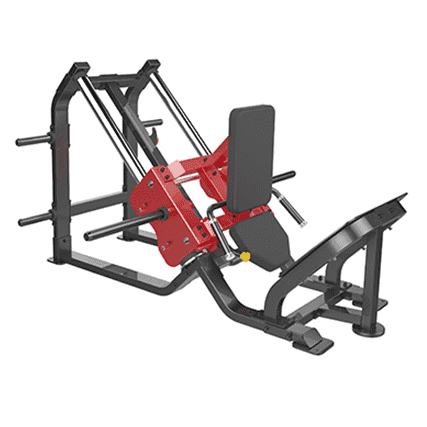
Both V Squats and Hack Squats are variations of squats that aim to build lower body strength and muscle. But what sets them apart? Let’s explore their unique features.
Muscles Targeted
- V Squat: Activates the quadriceps, hamstrings, and glutes, but to a slightly different degree compared to the hack squat.
- Hack Squat: Primarily targets the quadriceps, with secondary activation of the hamstrings and glutes.
Machine Configuration
- V Squat: Utilizes a V-shaped machine that allows for a different angle of squat.
- Hack Squat: Typically uses a hack squat machine with a straight back pad.
Technique and Form
- V Squat: Provides a more upright position, reducing lower back strain.
- Hack Squat: The tilted position emphasizes the quads but may require careful attention to avoid lower back strain.
Versatility
- V Squat: Offers some flexibility in foot placement for targeting different muscle groups.
- Hack Squat: Less versatile but can be modified through different variations, which we’ll discuss below.
To get a well-rounded workout regimen, consider adding in lunges, which are another excellent lower-body exercise. Learn more about lunges in this comprehensive guide.
Different Variations of Hack Squats
Hack squats come in various flavors, each with its own benefits and caveats. Here’s a rundown of some popular hack squat variations:
1. Landmine Hack Squat
This version utilizes a landmine attachment, allowing for a different angle and greater focus on the glutes and hamstrings.
2. Reverse Hack Squat
Performed facing the backrest, this variation shifts more focus onto the hamstrings and the posterior chain.
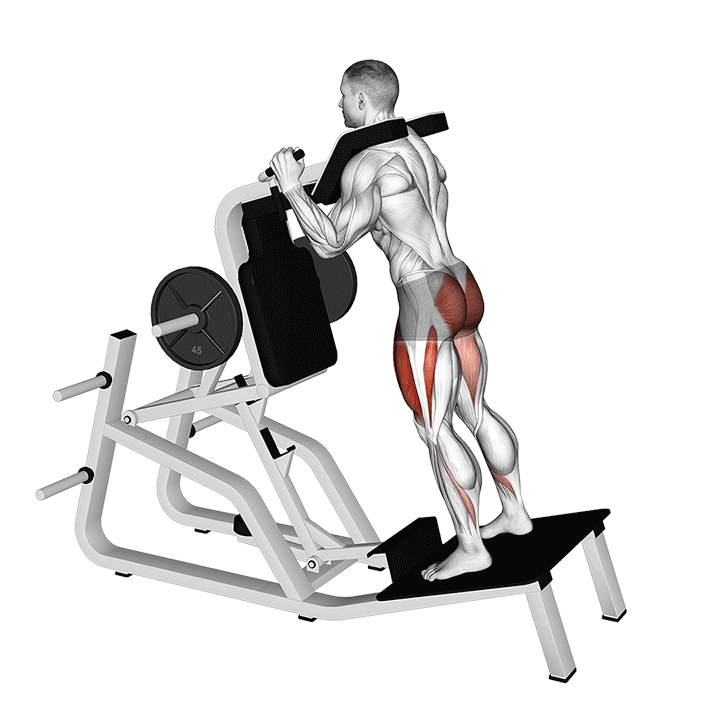
3. Linear Hack Squat
Done on a linear hack squat machine, this variation allows for a more straightforward, up-and-down motion, targeting the quads efficiently.
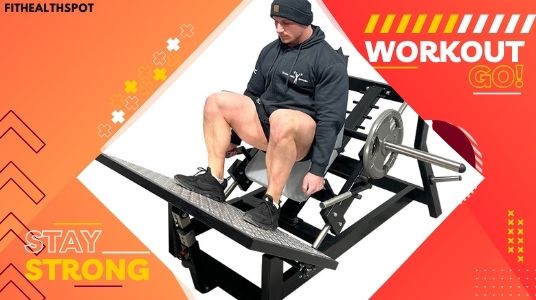
4. Cybex Hack Squat
Specific to Cybex brand machines, this version is known for its ergonomic design and safety features, making it a popular choice among gyms. Interested in a more comprehensive approach to fitness? Calisthenics offer full-body workouts that require minimal equipment. Check out this guide to calisthenics workouts for more
Hack Squat Machines and Equipment
While the concept of a hack squat remains consistent, the types of equipment you can use to perform this exercise can vary widely. Understanding your options can help you choose the method that best fits your training goals and environment.
1. Leg Press Hack Squat Machine

This dual-purpose machine can be adjusted to allow for both leg presses and hack squats. It’s an excellent choice for those who want to maximize their workout without switching machines.
2. Hack Squat Leg Press Machine
Similar to the leg press hack squat machine, this equipment can also be converted between the two exercises. However, its design might offer different angles or ergonomic features, so it’s essential to try out both and see which one you prefer.
3. Hack Squat Smith Machine
If you don’t have access to a dedicated hack squat machine, a Smith machine can be a suitable alternative. The fixed barbell allows for a stable, guided movement, making it easier to maintain proper form.
4. Smith Machine Hack Squat
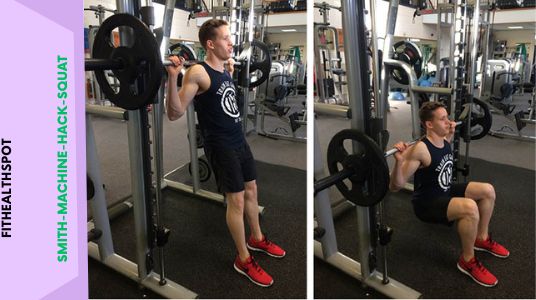
This is essentially the same as the hack squat Smith machine, but sometimes the terminology can differ depending on the gym or manufacturer.
5. Barbell Hack Squat

For those who prefer free weights, a barbell hack squat can be a fantastic choice. It challenges your stability and control more than machine-based versions, requiring additional core engagement.
To enhance your lower body workout even further, consider incorporating calf exercises. Strong calves not only improve your leg aesthetics but also contribute to overall stability and performance. Here are some of the best calf exercises you can add to your routine.
Hack Squat Alternatives
While hack squats are a stellar exercise for targeting the lower body, there may be instances where you want or need to explore alternatives, either due to equipment limitations or to add variety to your routine. Here are some alternatives you can consider:
1. Hack Squat Alternative
If you don’t have access to a hack squat machine, traditional barbell squats can be a useful alternative. They target similar muscle groups but also engage your core and back for a more holistic workout.
2. Reverse Hack Squat Alternative
Sumo deadlifts are a great alternative to reverse hack squats. They target the hamstrings and glutes while providing a different dynamic that can add variety to your routine. Learn more about sumo deadlifts in this comprehensive guide.
Hack Squat Foot Placement
Foot placement in hack squats isn’t just a trivial detail; it significantly influences which muscles are most engaged during the exercise.

Narrow Stance
A narrow stance focuses more on the outer quadriceps, offering a different muscle activation pattern compared to a wider stance.
Wide Stance
A wider stance targets the inner thighs and can take some pressure off the knees, making it a better option for those with knee concerns.
High or Low on the Platform
Placing your feet higher on the platform can increase hamstring and glute engagement, while a lower foot placement will target your quadriceps more directly.
If you’re keen on diversifying your lower back and hamstring exercises, hyper-extensions are a useful addition to any workout regimen. Check out this guide for variations, benefits, and safety tips for hyperextensions.
The Muscles Worked by Hack Squats
Hack squats are a versatile exercise that targets multiple muscle groups in your lower body. Here are the primary muscles engaged:

- Quadriceps: These muscles at the front of your thighs are the main target.
- Hamstrings: Located at the back of the thighs, they act as secondary muscles.
- Glutes: Both the gluteus maximus and the gluteus medius are involved, though to a lesser extent than the quads and hamstrings.
- Calves: The gastrocnemius and soleus muscles also get a workout, particularly when you push through your heels to rise from the squat position.
- Core: While not the primary focus, your abdominal and lower back muscles are engaged for stability.
Benefits of Hack Squats
Hack squats are more than just another leg exercise; they come with a range of benefits that can enhance your overall fitness:

- Muscle Isolation: The machine helps in isolating the quads, allowing for targeted muscle building.
- Safety: Using a machine can be safer than free weights, especially for beginners.
- Lower Back Relief: The design of hack squat machines provides back support, reducing lower back strain.
- Versatility: With the right foot placement and machine settings, you can target different muscles effectively.
- Strength and Endurance: Over time, hack squats can help build both strength and muscular endurance.
Common Mistakes and How to Avoid Them
While hack squats can be incredibly beneficial, they’re not without pitfalls. Here are some common mistakes and how to correct them:

- Poor Foot Placement: Ensure your feet are neither too high nor too low on the platform to avoid unnecessary stress on the knees.
- Rounding the Back: Keep your back pressed firmly against the pad throughout the movement.
- Locking the Knees: Never fully lock your knees at the top of the movement; keep them slightly bent to avoid joint strain.
- Rushing the Movement: A slow, controlled motion is more effective and safer.
- Ignoring Form for Weight: Always prioritise form over how much weight you can lift. Using the wrong technique can result in injuries and make your workouts less efficient.
Conclusion
Hack squats are more than just a variant of the traditional squat; they offer a specialised workout experience designed to target specific lower-body muscle groups. Whether you use a leg press hack squat machine, a Smith machine, or even opt for barbell hack squats, the exercise is remarkably adaptable. Your foot placement can significantly influence which muscles you work, and a range of alternatives exists if you’re looking to switch things up. But like any exercise, it’s crucial to get your form right to make the most out of your efforts and avoid unnecessary injuries.
By incorporating hack squats into your routine, you’re investing in a versatile and effective workout that promises not only muscle growth but also improved strength and stability. We hope this comprehensive guide has armed you with all the information you need to execute this challenging but rewarding exercise with confidence.
So why wait? It’s time to give hack squats a shot and elevate your lower body workouts to the next level!
FAQ’s
What Makes Hack Squats an Essential Component of Your Workout Routine?
Hack squats are a valuable addition to any workout regimen focused on building lower body strength and muscle mass. They offer a way to isolate specific muscle groups like the quadriceps, making them excellent for targeted training. Hack squats are also less taxing on the lower back compared to traditional squats, which can be beneficial for those with back issues.
How Does the Hack Squat Work?
The hack squat works by placing your body in a fixed path of motion, which isolates the lower body muscles. As you descend into a squatting position, your quadriceps, hamstrings, and glutes engage to control the movement. Then, pushing through your heels, you return to the starting position, fully engaging these muscle groups. The fixed path allows for targeted muscle engagement, making it effective for muscle building and toning.
What Are Hack Squats Good For?
Hack squats are particularly good for building lower body strength, specifically in the quadriceps, hamstrings, and glutes. They are also beneficial for improving muscle endurance and can be safer for individuals with lower back issues due to the back support provided by the machine. Additionally, hack squats can be modified to target different muscle groups more intensively, depending on foot placement and squat depth.
Why Is Hack Squat So Hard?
The difficulty level of hack squats can be attributed to the isolated engagement of muscle groups. Unlike traditional squats, which employ a range of stabilising muscles, hack squats focus on the lower body, making the exercise more intense for these muscle groups. This level of isolation can make the exercise seem harder, especially if these particular muscles are less developed.
Are Hack Squats as Good as Squats?
The answer depends on your fitness goals. Traditional squats engage more muscle groups, including the core and back, making them more of a compound exercise. Hack squats, on the other hand, are excellent for targeted training of the lower body. If your goal is to specifically build strength and mass in your legs, hack squats are highly effective. However, for overall body conditioning, traditional squats may be more suitable
Is the Hack Squat Different from the Deadlift?
Yes, hack squats and deadlifts target different muscle groups and involve different mechanics. While both exercises work the lower body, deadlifts also heavily engage the back, shoulders, and grip strength. The movements are also different: a deadlift starts from a ‘dead stop’ off the floor, engaging multiple muscle groups to lift the weight, whereas the hack squat is more of a controlled, sliding motion that primarily targets the legs.

